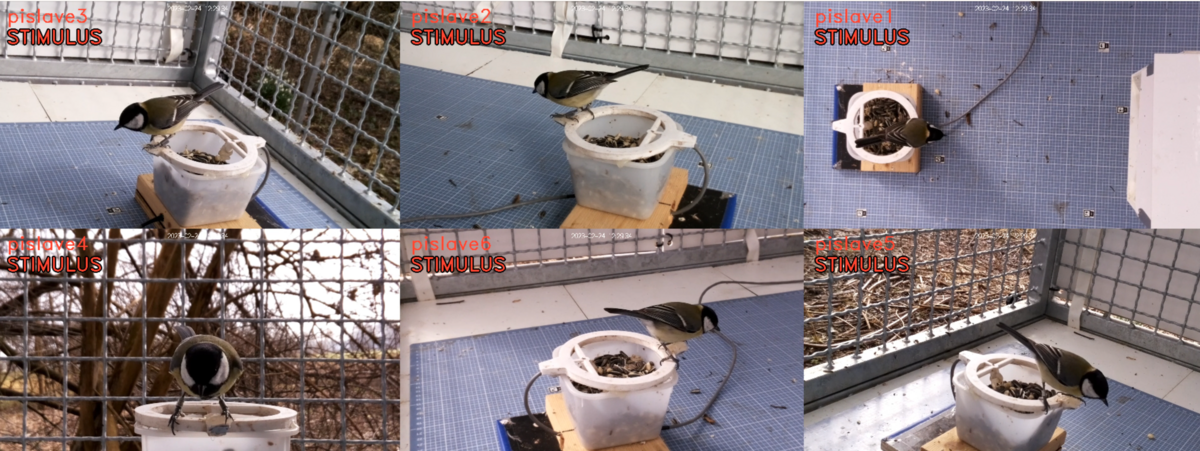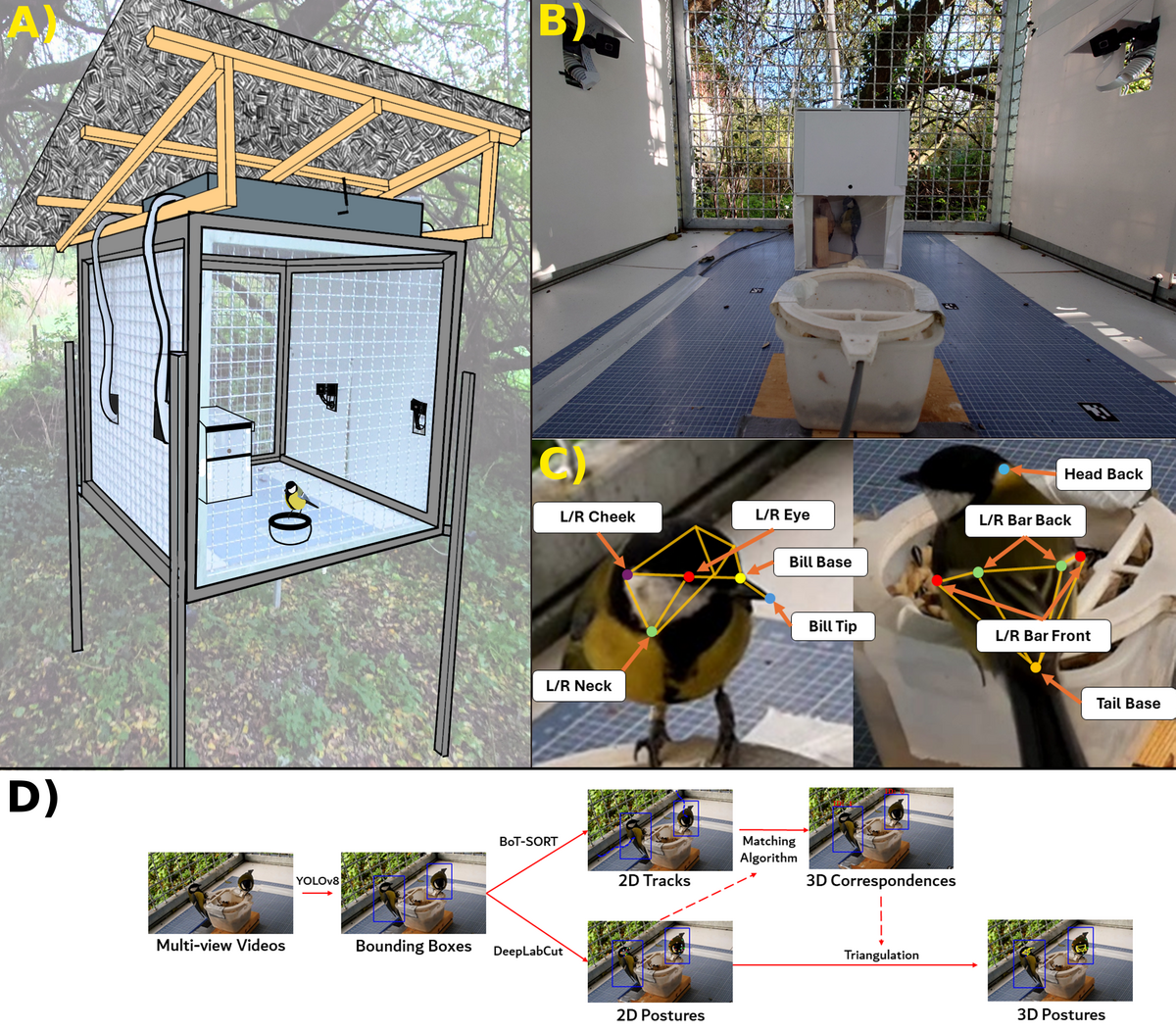
Quantifying attention networks in great tits during social learning
Association networks are the substrate of animal culture, as social transmission of novel behaviour relies on attention. However, while association is necessary for attention, many other factors might modulate attention itself, making attention differ from simple association.
In this project, we aim to disentangle attention during a social learning task using cutting edge machine learning techniques to extract gaze and identity information from individual birds. We then aim to explore whether attention predicts learning success, and how closely attention networks reflect association networks. We approach these questions using two experiments in the wild. The first is a stimulus presentation experiment to determine how great tits use their field of view to regard stimuli. The second experiment applies the knowledge gained from the first in a cultural diffusion experiment, where information on how to solve a foraging puzzle spreads through a natural population.

Figure:
Overview of 3D-SOCS. A) Our mobile data collection system was housed in an elevated cage with a roof for protection. B) Whenever a tagged bird landed on the feeding perch, the PLDC glass of the stimulus presentation device (background) turned transparent, revealing a stimulus. Frame-synchronized cameras placed around the cage filmed birds from various angles as they regarded the stimulus. C) We extracted keypoints on the head and body of birds, and used this information to create a 3D representation of the bird. D) Summary of the 3D tracking pipeline applied to videos.

Collective behaviour researcher Michael Chimento and Alex Chan at their fieldwork station
